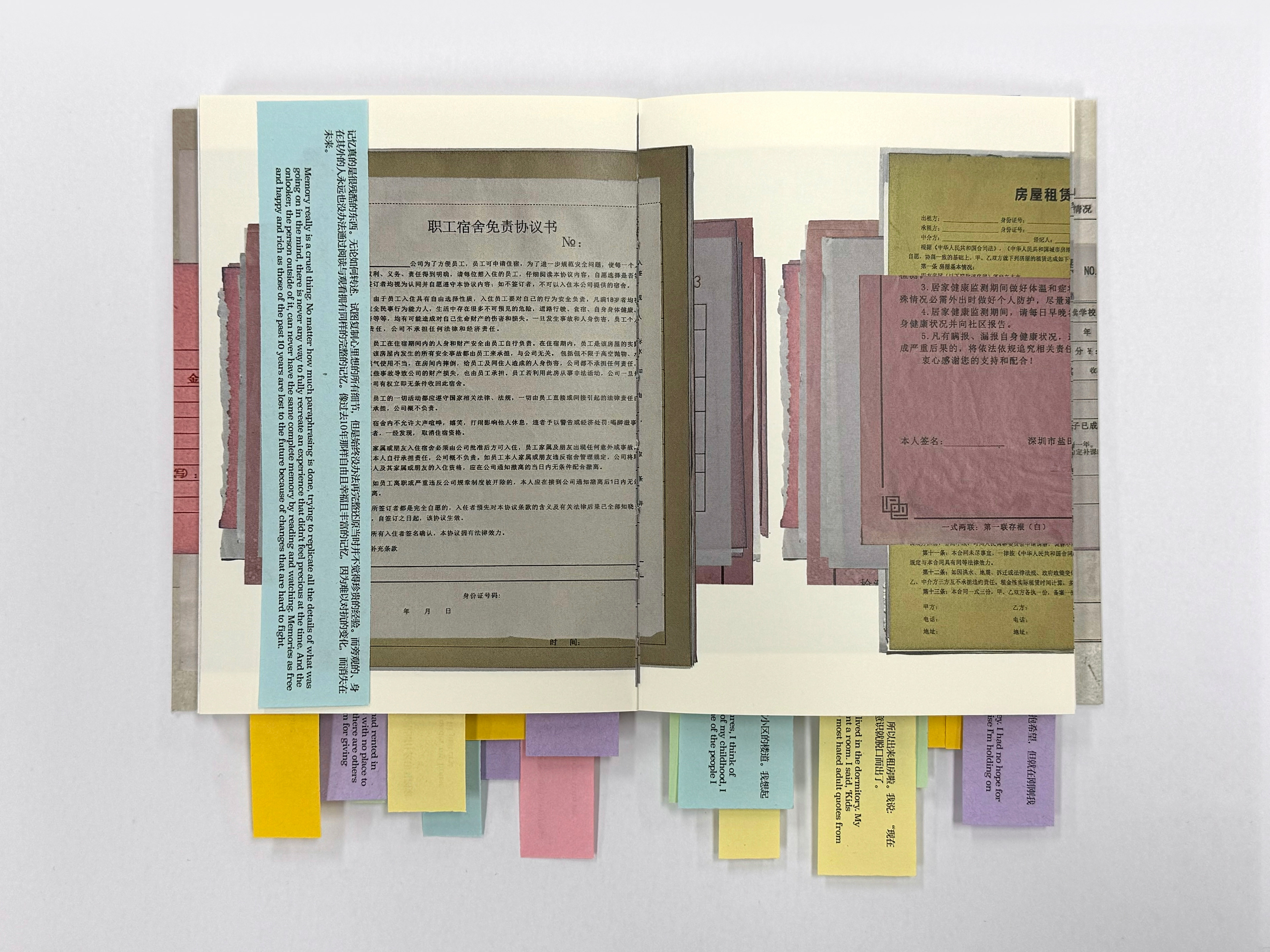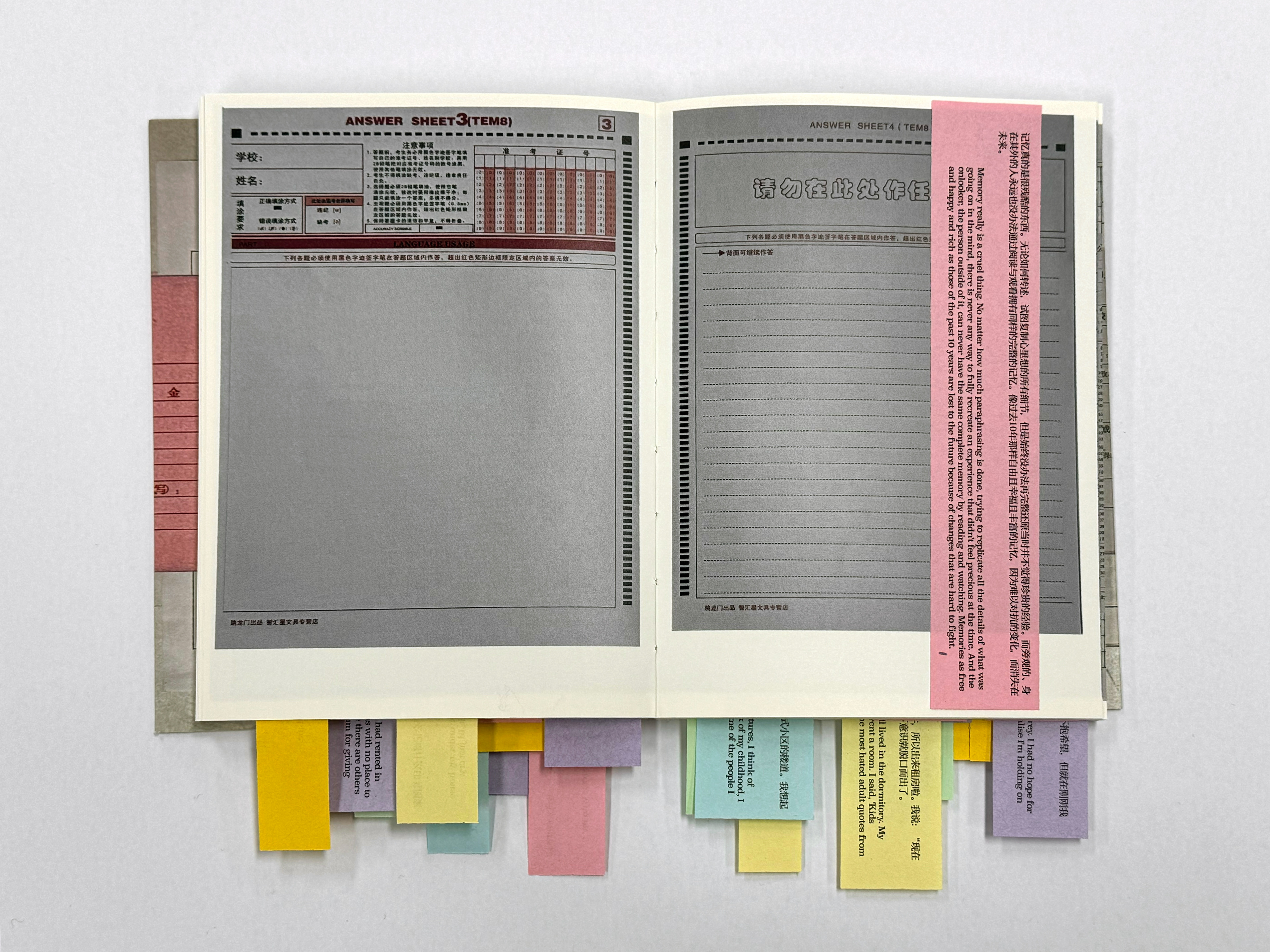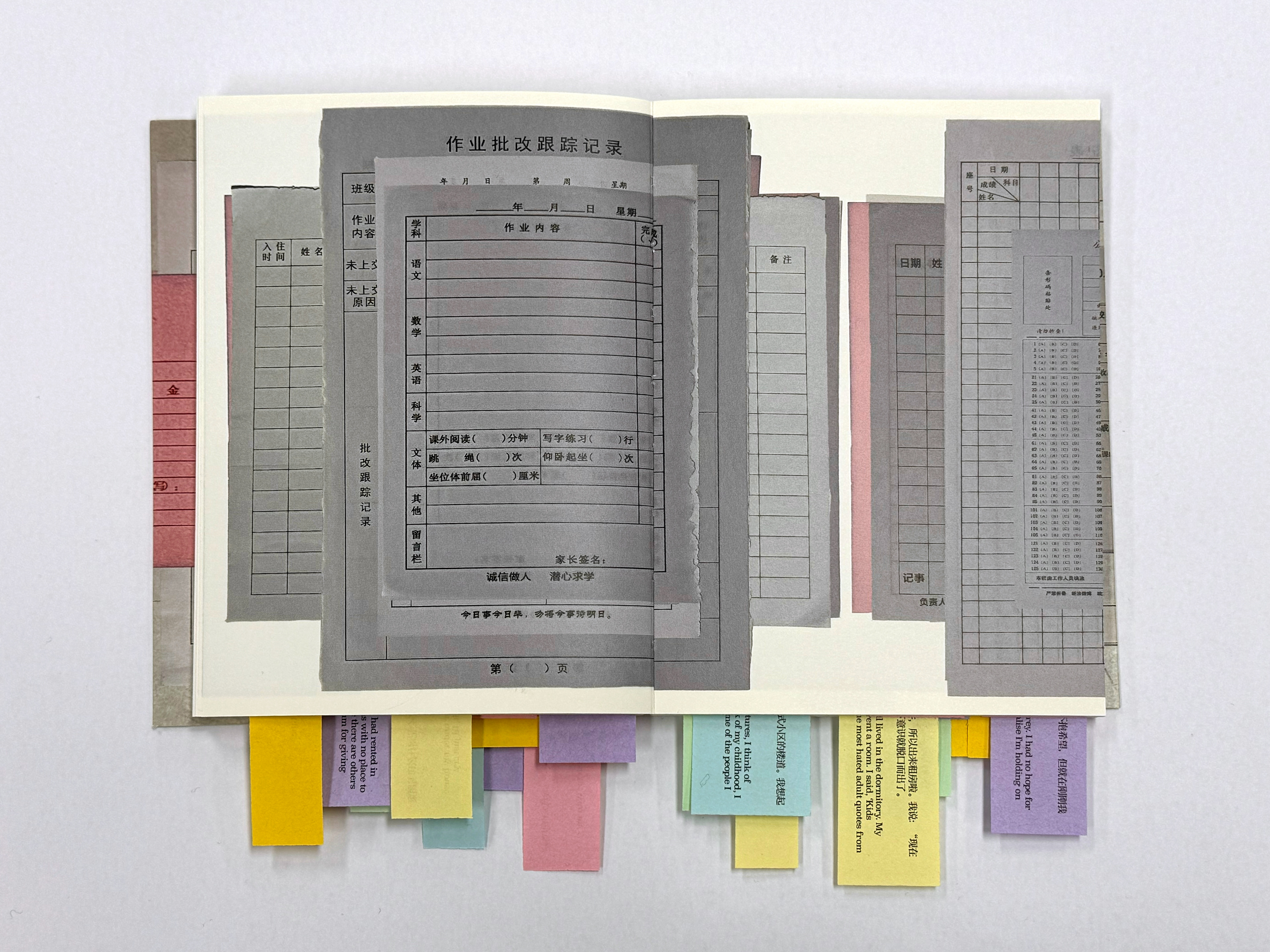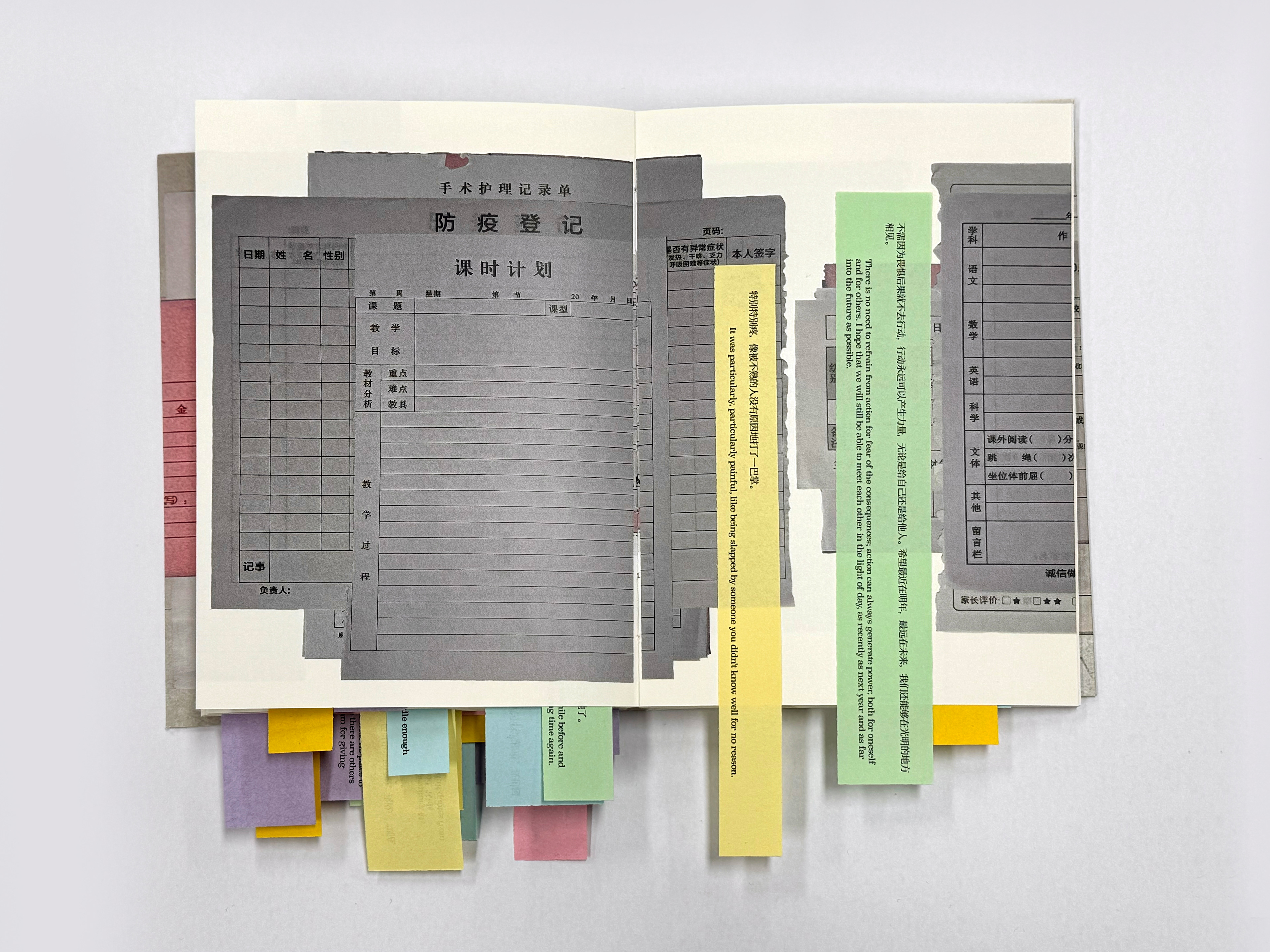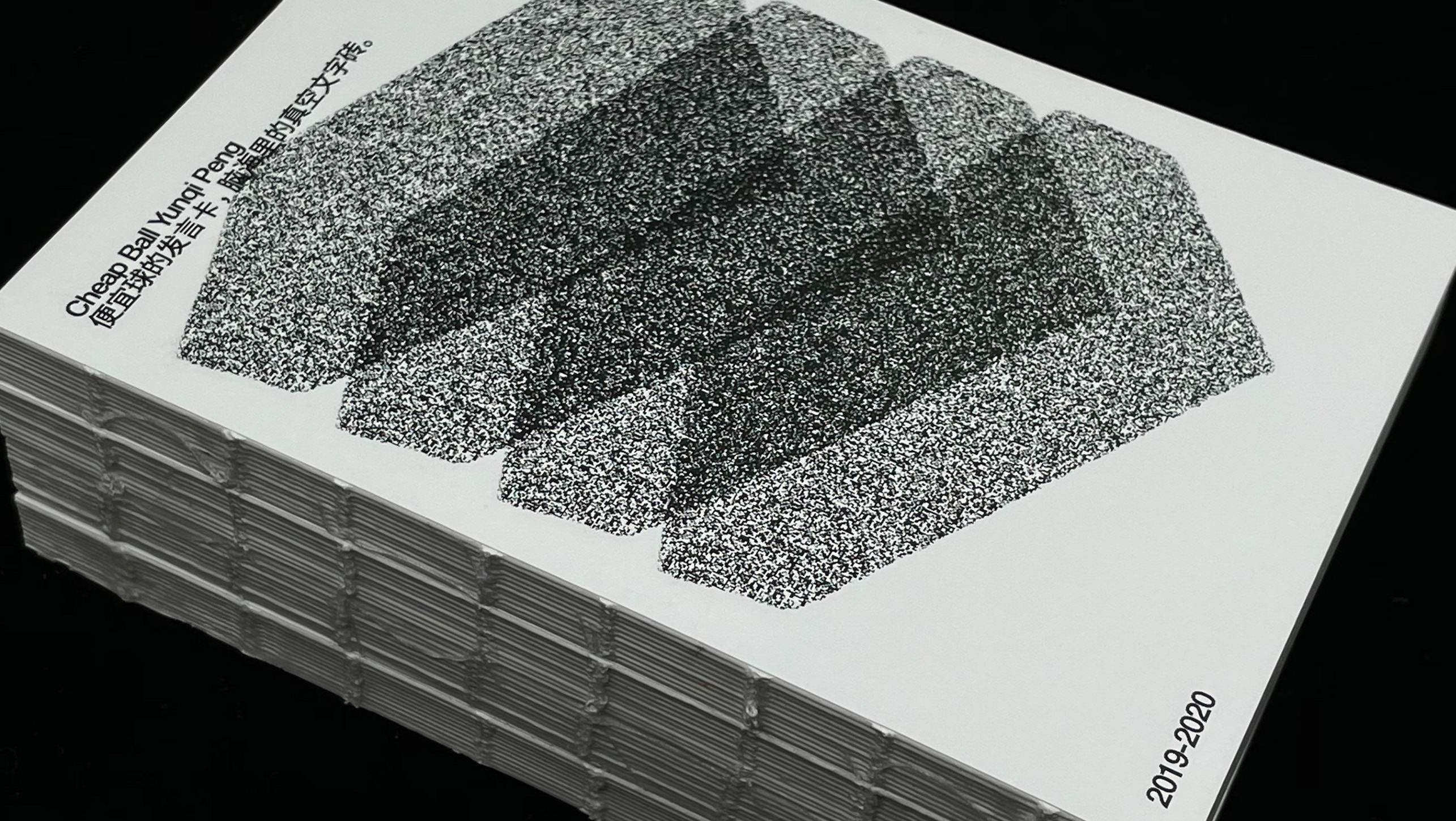The Interpretation of Memory is an experimental artists' book project that deconstructs the traditional image of the book as fixed ‘text with images’ by changing the physical shape and design logic.
I collected all the forms and contracts that a Chinese person born in the 90s would have in their lifetime. This includes forms for school contact with parents, kindergarten mealtime forms, temperature measurement forms during the epidemic, school test answer sheets, etc. These images directly indicate an official and objective design style, but in combination with a particular cultural context possess a more unofficial, private and emotional interpretant.
The image part and the text part of the book are isolated, but they can be pasted together through the interaction between the audience and the practitioner. Viewers can write new stories on slips of paper by associating their feelings with images in the main part of the book, which can later be put onto different pages by different viewers.
A story will represent different images in different people‘s minds, and an image will represent different memories in different people’s minds. Stories are no longer unilaterally bound to fixed images. My desire is to return the power of interpretation to the audience with whom I share a unique and intimate reading experience. It's gentle yet extraordinarily difficult.
"When I wake up from a dream, my vision and mind are filled with trance and foggy clusters of colour. Sometimes I am reluctant to trust my memories, and I am sceptical of these forms that claim to be able to prove my memories: the power to interpret my memories and experiences, to divide life into phases, to set up thresholds of access and coding systems, to be uncertain things in the mist."









